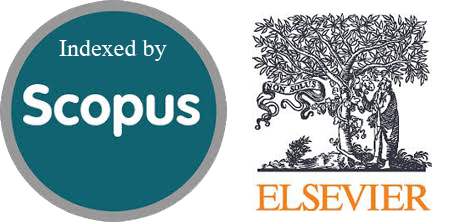Enhancing Areca Nut Detection and Classification Using Faster R-CNN: Addressing Dataset Limitations with Haar-like Features, Integral Image, and Anchor Box Optimization
Abstract
The classification and detection of areca nuts are essential for agriculture and food processing to ensure product quality and efficiency. The manual classification of areca nuts is time-consuming and prone to human error. For a more accurate and efficient automated approach, a deep learning-based framework was proposed to address these challenges. This study optimizes the Faster R-CNN by integrating Haar-like features and integral images to enhance object detection. However, dataset limitations, including low image quality, inconsistent lighting, cluttered backgrounds, and annotation inaccuracies, affect the model performance. In addition, the small dataset size and class imbalance hindered generalization. The Faster R-CNN model was trained with and without Haar-like Features and Integral Image enhancement. Performance was evaluated based on training loss, accuracy, precision, recall, F1-score, and mean average precision (mAP). The effects of the dataset limitations on detection performance were also analyzed. The optimized model achieved better stability, with a final training loss of 0.2201, compared to 0.1101 in the baseline model. Accuracy improved from 62.60% to 73.60%, precision from 0.6161 to 0.7261, recall from 0.3094 to 0.4194, F1-score from 0.2307 to 0.3407, and mAP from 0.1168 to 0.2268. Despite these improvements, dataset constraints remain a limiting factor. While the integration of Haar-like features and integral images into faster R-CNN contributes to detection accuracy, the study also reveals that high-resolution images, precise annotations, and dataset scale significantly amplify model performance.
Downloads
References
M. J. Hasan et al., “Nuclei Segmentation in ER-IHC Stained Histopathology Images using Mask R-CNN,” in 2022 International Symposium on Intelligent Signal Processing and Communication Systems (ISPACS), Nov. 2022, pp. 1–4. doi: 10.1109/ISPACS57703.2022.10082832.
M. Balipa, P. Shetty, A. Kumar, and B. R. Puneeth, “Arecanut Disease Detection Using CNN and SVM Algorithms,” presented at the International Conference on Artificial Intelligence and Data Engineering, AIDE 2022, 2022, pp. 64–67. doi: 10.1109/AIDE57180.2022.10060130.
M. R. Borroek, E. Rasywir, Y. Pratama, and M. Istoningtyas, “Analysis on Knowledge Layer Application for Knowledge Based System,” 2018 International Conference on Electrical Engineering and Computer Science …. 2018.
L. S. Nair, R. P. R, G. Sugathan, K. V. Gireesh, and A. S. Nair, “Mitotic Nuclei Detection in Breast Histopathology Images using YOLOv4,” in 2021 12th International Conference on Computing Communication and Networking Technologies (ICCCNT), Jul. 2021, pp. 1–5. doi: 10.1109/ICCCNT51525.2021.9579969.
S. Pandey, K. -F. Chen, and E. B. Dam, “Comprehensive Multimodal Segmentation in Medical Imaging: Combining YOLOv8 with SAM and HQ-SAM Models,” in 2023 IEEE/CVF International Conference on Computer Vision Workshops (ICCVW), Oct. 2023, pp. 2584–2590. doi: 10.1109/ICCVW60793.2023.00273.
H. Zhang et al., “An Improved Lightweight Yolo-Fastest V2 for Engineering Vehicle Recognition Fusing Location Enhancement and Adaptive Label Assignment,” IEEE J. Sel. Top. Appl. Earth Observations Remote Sensing, vol. 16, pp. 2450–2461, 2023, doi: 10.1109/JSTARS.2023.3249216.
P. M. Naik and B. Rudra, “Classification of Arecanut X-Ray Images for Quality Assessment Using Adaptive Genetic Algorithm and Deep Learning,” IEEE Access, vol. 11, pp. 127619–127636, 2023, doi: 10.1109/ACCESS.2023.3332215.
V. Arun Karthik, J. Shivaprakash, and D. Rajeswari, “Disease Detection in Arecanut using Convolutional Neural Network,” presented at the Proceedings - 3rd International Conference on Advances in Computing, Communication and Applied Informatics, ACCAI 2024, 2024. doi: 10.1109/ACCAI61061.2024.10602152.
C. A. Rahmat, H. Permatasari, E. Rasywir, and Y. Pratama, “Penerapan K-Means Untuk Clustering Kondisi Gizi Balita Pada Posyandu,” Jurnal Media Informatika Budidarma, vol. 7, no. 1. pp. 207–213, 2023.
A. N. N. Azmi, S. Khairunniza-Bejo, M. Jahari, and I. Yule, “Early Detection of Plant Disease Infection Using Hyperspectral Data and Machine Learning,” in IoT and AI in Agriculture, T. Ahamed, Ed., Singapore: Springer Nature Singapore, 2023, pp. 423–446. doi: 10.1007/978-981-19-8113-5_21.
F. Fahmi, D. Trianda, U. Andayani, and B. Siregar, “Image processing analysis of geospatial uav orthophotos for palm oil plantation monitoring,” J. Phys.: Conf. Ser., vol. 978, p. 012064, Mar. 2018, doi: 10.1088/1742-6596/978/1/012064.
I. Mohd Shukri, M. A. Izzuddin, R. Mohd Hefni, and A. S. Idris, “Geostatistics of Oil Palm Trees Affected by Ganoderma Disease in Low and High Planting Density,” IOP Conf. Ser.: Earth Environ. Sci., vol. 540, no. 1, p. 012065, Jul. 2020, doi: 10.1088/1755-1315/540/1/012065.
H. Fatakdawala et al., “Expectation–Maximization-Driven Geodesic Active Contour With Overlap Resolution (EMaGACOR): Application to Lymphocyte Segmentation on Breast Cancer Histopathology,” IEEE Transactions on Biomedical Engineering, vol. 57, no. 7, pp. 1676–1689, Jul. 2010, doi: 10.1109/TBME.2010.2041232.
W. Li, H. Fu, L. Yu, and A. Cracknell, “Deep Learning Based Oil Palm Tree Detection and Counting for High-Resolution Remote Sensing Images,” Remote Sensing, vol. 9, no. 1, p. 22, Dec. 2016, doi: 10.3390/rs9010022.
T. Seesaard, N. Goel, M. Kumar, and C. Wongchoosuk, “Advances in gas sensors and electronic nose technologies for agricultural cycle applications,” Computers and Electronics in Agriculture, vol. 193, p. 106673, Feb. 2022, doi: 10.1016/j.compag.2021.106673.
P. Singh, A. Verma, and J. S. R. Alex, “Disease and pest infection detection in coconut tree through deep learning techniques,” Computers and Electronics in Agriculture, vol. 182, p. 105986, Mar. 2021, doi: 10.1016/j.compag.2021.105986.
C. Raghuram and M. Thenmozhi, “Short Review on Contrastive Learning-based Segmentation Techniques for Medical Image Processing,” in 2023 International Conference in Advances in Power, Signal, and Information Technology (APSIT), Jun. 2023, pp. 290–296. doi: 10.1109/APSIT58554.2023.10201707.
A. K V, S. Krishna, and R. R. Paulose, “Computer-Aided Detection of Nuclei from Histopathology Image: Evaluating the Effectiveness of U-Net and Modified Networks for Nuclei Segmentation,” in 2023 3rd International Conference on Intelligent Technologies (CONIT), Jun. 2023, pp. 1–8. doi: 10.1109/CONIT59222.2023.10205653.
P. Ahmadi, S. B. Mansor, H. Ahmadzadeh Araji, and B. Lu, “Convolutional SVM Networks for detection of Ganoderma Boninense At Early Stage in oil palm using UAV and Multispectral Pleiades Images,” ISPRS Ann. Photogramm. Remote Sens. Spatial Inf. Sci., vol. X-4/W1-2022, pp. 25–30, Jan. 2023, doi: 10.5194/isprs-annals-X-4-W1-2022-25-2023.
A. Gupta, B. S. Rajeshwari, B. Ambadas, J. Shreyas, and G. Bhuvan, “Analysis Of Areca Nut Leaf Pathology And Recommendation System Using Generative AI,” in 2024 Second International Conference on Networks, Multimedia and Information Technology (NMITCON), Bengaluru, India: IEEE, Aug. 2024, pp. 1–8. doi: 10.1109/NMITCON62075.2024.10698896.
R. Dinesh and N. K. Bharadwaj, “Possible approaches to arecanut sorting / grading using computer vision: A brief review,” presented at the Proceeding - IEEE International Conference on Computing, Communication and Automation, ICCCA 2017, 2017, pp. 1007–1014. doi: 10.1109/CCAA.2017.8229971.
F. Fachruddin, S. Saparudin, E. Rasywir, Y. Pratama, and B. Irawan, “Extraction of object image features with gradation contour,” TELKOMNIKA, vol. 19, no. 6, p. 1913, Dec. 2021, doi: 10.12928/telkomnika.v19i6.19491.
A. J. Suresh and L. S. Nair, “Mitosis Detection In Breast Histopathology Image Using Ensemble Features Fed CNN Model,” in 2023 14th International Conference on Computing Communication and Networking Technologies (ICCCNT), Jul. 2023, pp. 1–5. doi: 10.1109/ICCCNT56998.2023.10307867.
J. Li, Y. Wu, X. Zheng, and S. Dong, “Supervoxels-based Self-supervised Few-shot 3D Medical Image Segmentation via Multiple Features Transfer,” in 2024 IEEE International Conference on Bioinformatics and Biomedicine (BIBM), Dec. 2024, pp. 3422–3427. doi: 10.1109/BIBM62325.2024.10822846.
N. A. Husin, S. Khairunniza–Bejo, A. F. Abdullah, M. S. M. Kassim, and D. Ahmad, “Study of the oil palm crown characteristics associated with Basal Stem Rot (BSR) disease using stratification method of point cloud data,” Computers and Electronics in Agriculture, vol. 178, p. 105810, Nov. 2020, doi: 10.1016/j.compag.2020.105810.
M. Isnan, A. A. Hidayat, and B. Pardamean, “Indonesian Agricultural-crops Classification Using Transfer Learning Model,” Procedia Computer Science, vol. 227, pp. 128–136, 2023, doi: 10.1016/j.procs.2023.10.510.
A. Y. Khaled, S. Abd Aziz, S. Khairunniza Bejo, N. Mat Nawi, D. Jamaludin, and N. U. A. Ibrahim, “A comparative study on dimensionality reduction of dielectric spectral data for the classification of basal stem rot (BSR) disease in oil palm,” Computers and Electronics in Agriculture, vol. 170, p. 105288, Mar. 2020, doi: 10.1016/j.compag.2020.105288.
M. Maray et al., “Artificial intelligence-enabled coconut tree disease detection and classification model for smart agriculture,” Computers and Electrical Engineering, vol. 104, p. 108399, Dec. 2022, doi: 10.1016/j.compeleceng.2022.108399.
M. B. A. Gibril et al., “Large-scale assessment of date palm plantations based on UAV remote sensing and multiscale vision transformer,” Remote Sensing Applications: Society and Environment, vol. 34, p. 101195, Apr. 2024, doi: 10.1016/j.rsase.2024.101195.
Copyright (c) 2025 Jurnal RESTI (Rekayasa Sistem dan Teknologi Informasi)

This work is licensed under a Creative Commons Attribution 4.0 International License.
Copyright in each article belongs to the author
- The author acknowledges that the RESTI Journal (System Engineering and Information Technology) is the first publisher to publish with a license Creative Commons Attribution 4.0 International License.
- Authors can enter writing separately, arrange the non-exclusive distribution of manuscripts that have been published in this journal into other versions (eg sent to the author's institutional repository, publication in a book, etc.), by acknowledging that the manuscript has been published for the first time in the RESTI (Rekayasa Sistem dan Teknologi Informasi) journal ;







